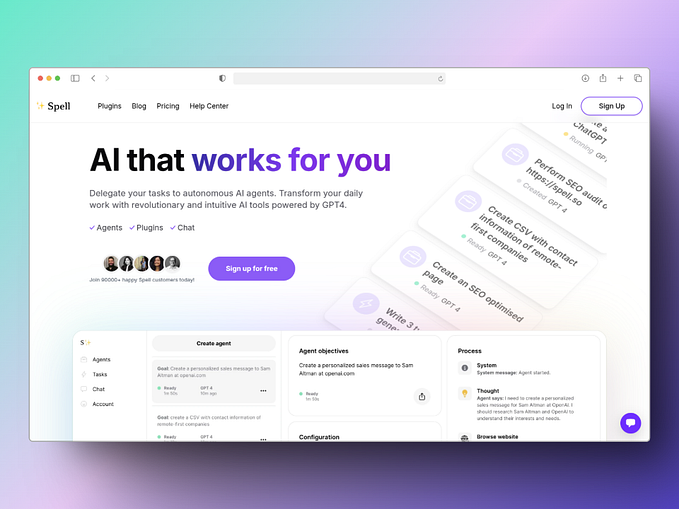From Fiction to Reality: A Common Thread Between HBO Silicon Valley and Open AI
In recent news, 2 really big tech company have rushed to implement GPT models in their product, only to realize a few months later that the AI was providing fake information from “trustworthy” sources. This misstep could ultimately lead to the downfall of the Open AI company, or maybe force it to operate under a closer watchful government eye. This is the Verge voice:
It’s a laughable situation but one with potentially serious consequences. Given the inability of AI language models to reliably sort fact from fiction, their launch online threatens to unleash a rotten trail of misinformation and mistrust across the web, a miasma that is impossible to map completely or debunk authoritatively. All because Microsoft, Google, and OpenAI have decided that market share is more important than safety.
Also, it’s clear that the AI industry is still in its early stages, and the future is uncertain. But with talented and visionary founders leading the charge, there’s reason to believe that Open AI could really play a significant role in shaping the future of AI development tools. But what I see — Simpson’s paradox.
It’s not hard to draw comparisons between this scenario and the hit HBO series Silicon Valley, which depicted the rise and fall of fictional startup Pied Piper. But what about the real-life AI company? Could their history follow a similar path to the show? Or it will be another 10 years later…
Of course, we won’t know for sure what the future holds for Open AI. But as we’ve seen with HBO’s Pied Piper, the final outcome could be influenced by a number of factors, including the founders’ vision, the company’s ability to navigate challenges, and the larger trends in the tech industry.
Similarities Between Silicon Valley and Open AI
Let’s take a closer look at some similarities between the show and the real-life players in the AI industry. For me, just like Pied Piper’s founder Richard Hendricks, Open AI’s co-founder Sam Altman is both successful owner with a vision for transforming the tech industry. So here are some facts:
- Just like the fictional character Richard Hendricks, Open AI co-founder Sam Altman started his tech career early, founding a location-based social networking startup called Loopt when he was just 19.

2. Similar to the Silicon Valley character Gavin Belson, Open AI previous co-founder Elon Musk has a reputation for making bold, sometimes controversial statements. Musk is known for his work with SpaceX and Tesla, and has also expressed concerns about the potential dangers of AI.

3. Both Silicon Valley and Open AI explore themes around innovation and disruption in the tech industry. While the show takes a satirical approach, Open AI is focused on developing cutting-edge AI technologies and pushing the boundaries of what’s possible. But even some team members look the same way and I am sure, if we will dive into details of the team’s structure we will find more surprising conspiracy facts that can proof my idea :)
4. Just like Pied Piper, Open AI has faced challenges around transparency and accountability in AI development. Open AI has been criticized for not being transparent enough about its research and development processes, and there are concerns about the potential impact of AI on society. If Elon Musk will start it’s own AI competition we can even predict his next steps.

5. In Silicon Valley series, Richard Hendricks is faced with the challenge of balancing his vision for Pied Piper with the pressures of investors and the tech industry. Similarly, Open AI has to navigate issues around maintaining its independence and avoiding conflicts of interest with its former huge investors, including Musk who looks very similar to the Gavin Belson, the main antagonist of the HBO television series.
6. Both Pied Piper and Open AI are focused on developing disruptive technologies that have the potential to change the tech industry. While Pied Piper’s focus is on a new compression algorithm, Open AI is focused on developing advanced AI models that can tackle complex problems.

However, just like Hendricks, the founders of Open AI have faced their fair share of challenges. In the case of Open AI, the company has had to navigate issues around transparency and accountability in AI development. There’s also the question of whether Open AI will be able to maintain its independence, or if it will eventually be absorbed by a larger tech giant.
7. In Silicon Valley, Pied Piper faces competition from rival tech companies like Hooli (that is very similar to the Google situation right now after that scandal), who are also working on their own compression algorithm. Similarly, Open AI faces competition from other AI companies like Google, who are also investing heavily in AI research and development.
8. Just like the fictional tech entrepreneurs in Silicon Valley, the founders of Open AI have had to deal with setbacks and failures along the way. For example, in 2018, Open AI had to scale back its language model, GPT-2, over concerns about the potential misuse of the technology.

9. Both Silicon Valley and Open AI owners explore themes around the ethics of technology and the potential consequences of unchecked innovation. While Silicon Valley takes a more comedic approach, Open AI is actively working to ensure that AI is developed responsibly and ethically.
10. In the end, both Pied Piper and Open AI are focused on pushing the boundaries of what’s possible in the tech industry. While their paths may be different, they share a common vision for using technology to improve the world and make it a better place for all.
Conclusion
So what does this all mean for the future of Open AI? If we look to the final season of Silicon Valley, we see Pied Piper facing similar challenges around accountability and independence. In the end, the company is acquired by a larger tech giant, leaving its founders questioning their original vision.
It’s possible that Open AI could face a similar fate. With AI development becoming increasingly important in the tech industry, it’s not hard to imagine that a larger company could swoop in and absorb Open AI. Alternatively, Open AI may be able to maintain its independence and continue to push the boundaries of AI research and development.






